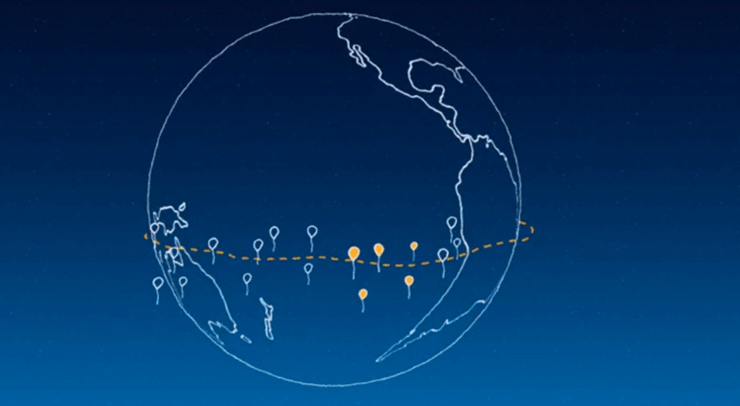Using mathematical optimization, to fly Internet balloons and to detect heart disorders

As Johan Mathe sees things — he incidentally is mad keen on mathematical optimization (and a recent UTC graduate) — various complex problems can be solved using a similar methodological approach: i.e., you optimize the system to attain an acceptable solution. The model used to move and position Google Internet antennae is close to the algorithm developed to detect and classify cardiac mal formation using an ultrasonic sensor input.
Does Google ever do things like anyone else? In the Goggle X research labs near San Francisco, any new project will be deemed worthy if and when the development cannot demonstrate that it will not work. “Take the Loon project the aim of which is to provide Internet access to 4 billion people on Earth (who today have no connections), the idea is to place helium balloons in the stratosphere; the initial project team tried to demonstrate that it was impossible to position these relay balloons – hundreds would be needed — with sufficient accuracy”, explains Johan Mathe, UTC graduate and former engineer on the Google Loon team.
Accuracy needed: better than 200 km Having the balloons change altitude to make use of winds is the only way to move and position these antennae balloons accurately so they can act as relays for mobile phones. For several years, the R&D team modelised and experimented the set-up, trying to show the extreme difficulty met with these balloons (15m diameter!) flying some 20 km above the Earth. “The project was almost abandoned because we could not hold a position with an accuracy better than 200 km, whereas the transmission range is less than 40 km”, underlines Johan Mathe
A local approach
But just at the time the team was about to demonstrate that the programme was not feasible, two innovations changed the deal. “The first idea consisted of using atmospheric winds to change the balloon height and make it move laterally”, explains Johan Mathe who wrote the algorithm that enabled the balloon to move “upwind” (when the wind a priori was blowing the wrong way!). Controlling various wind levels calls for a precise knowledge of local weather conditions. The second idea consisted of using the balloons themselves to collect and transmit the data needed via on-board sensor devices.
The result was an accuracy of 500 m for a balloon in flight between New Zealand and Chile. The flight continued for another 3 months, during which the balloon accomplished several revolutions of the Earth.
From balloons to cardiac malformation
The work was a success for Google and also for the mathematical optimization methods implemented by Johan Mathe to compute the balloon trajectories and a high complex and uncertain milieu. “The optimization tools I used here can potentially be applied to all sorts of differing problems”, explains our UTC graduate, who chose to leave Google and move to another area: detection of cardiac malformation using echography, with the view to preventing future heart disorders from occurring. Johan was all the more sensitive to this field because of family cases, and he was recruited by Baylabs who were developing recognition algorithms base on ‘deep-learning” processes, which is an innovative area for automatic learning protocols. “The processes relay on very efficient visual recognition tools which are used both for self-drive cars to photo analysis and management techniques”, underlines Johan Mathe. Again, from Johan’s point of view, recognizing a malformation consists of optimizing its identification from among a set of possible results.
Echo-graphics is an inexpensive way to analyse parents’ conditions, and the development of a tool that helps non-specialists – such as the GPs – to easily detect a heart condition represents a great progress in this field. It is all the more important that heart diseases are a major factor for mortality and numerous abnormal conditions can only be detected today by specialists using expensive equipment.
Mathematical optimisation, whether it be applied to stratospheric balloons or to detection of heart malformations, is almost magical in the sense that the same degree of formal presentation and analysis allow very different physical situations to be assessed.




